Asian cultures have a long spiritual history, with spellbinding locales dedicated to enriching the heart and soul. From ancient stupas and dazzling shrines to grand mountains and mesmerizing rivers, every sight has its charms and wonders waiting for you to experience. So, leave the hectic city for a while, and take a cool, soulful trip to these mystical destinations.
Angkor Wat, Cambodia
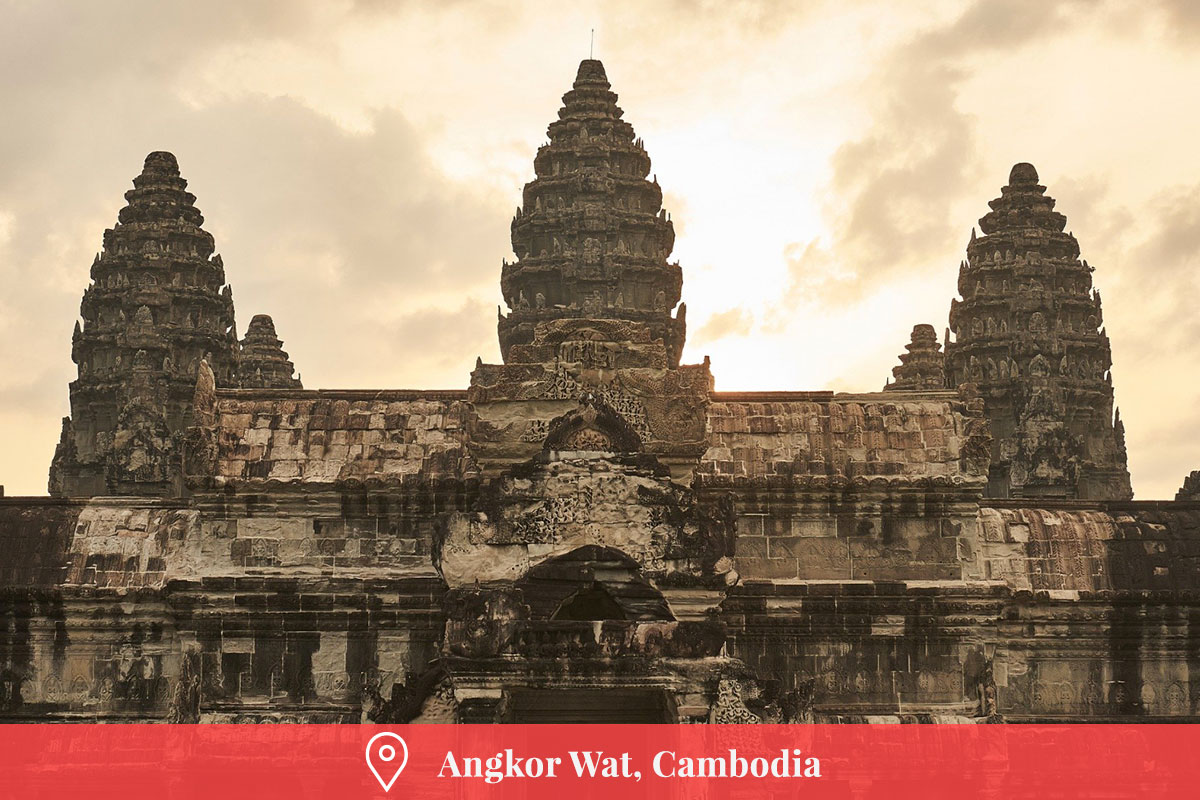
Known as the Capital of Temples, Angkor Wat is the largest religious monument in the world. A magnificent Hindu temple complex beside the town of Siem Reap, Cambodia; built by the Khmer King Suryavarman II in the early 12th Century. It has a grand outer wall surrounding a massive central structure in classical high Khmer design. Galleries, towers and libraries adorned with incredible bas reliefs, sculptures and statues that have captivated visitors from all over the world. Truly a sight to behold.
Luang Prabang, Laos

The cultural and spiritual centre of Laos along the Mekong River, Luang Prabang doesn’t look like Southeast Asia but feels more like France; blending rural and urban architecture from ancient times with developments from the French colonial period during the 19th to 20th Century. A former royal capital until 1975, it has many breath-taking temples, unique city streets with an intertwining river system, as well as natural wonders. Notable historic sites include the Haw Kham Royal Palace Museum, the Wat Xieng Thong and Wat Hosian Voravihane temples. Love nature? Take a dip at the gorgeous Kuang Si and Tat Sae Waterfalls, or visit the ethereal Pak Ou Caves filled with intricately crafted Buddhist sculptures. The food here is also a highlight because accordingly, many local chefs used to cook for the king! Try the Olam beef stew with lemongrass, Mokpa steam fish, Kaipen seaweed snack or sticky rice with spicy Jeow Bong sauce.
Sunken Stupas of Sagar, Myanmar
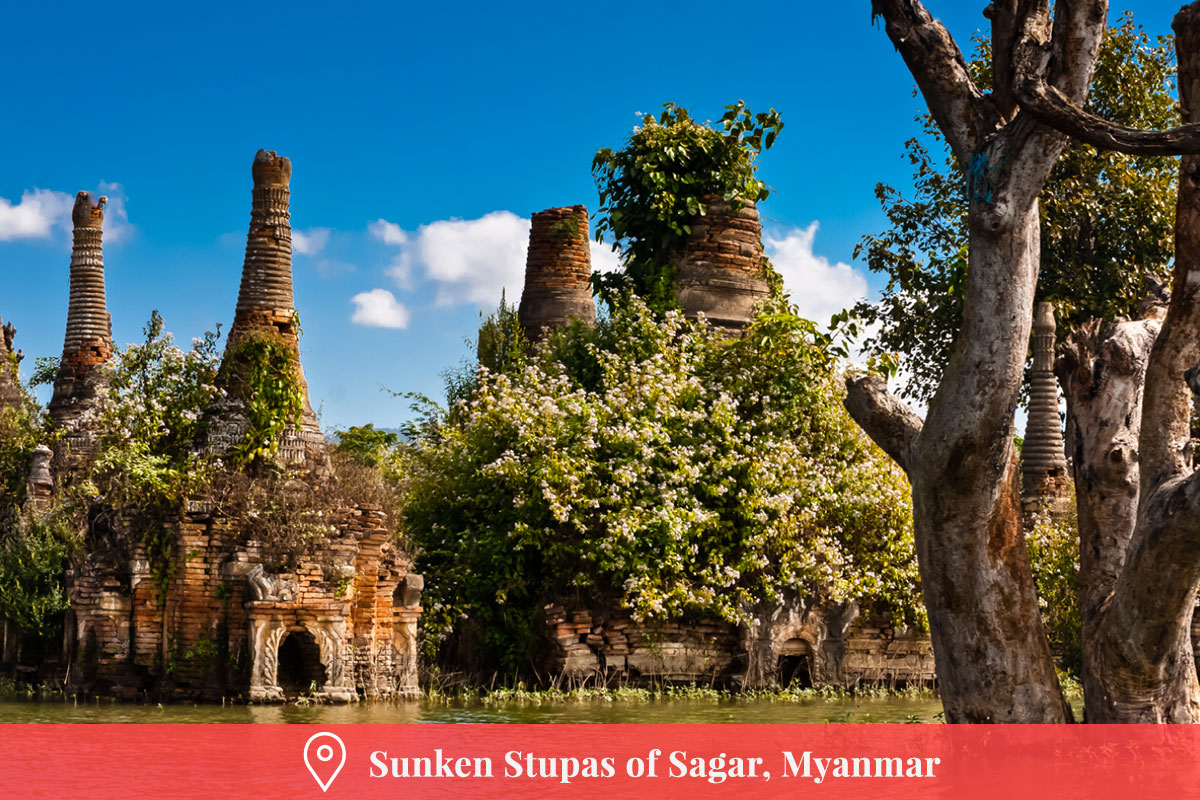
Nestled amidst the south side of Inle Lake, deep in Central Myanmar, is the ancient royal capital of Sagar; the site of many gorgeous pagodas and monasteries. The surrounding area is beautiful in itself, filled with greenery and a quiet village town of farmers and fishermen nearby. The true highlight, however, is the sunken stupas – built in the 16th and 17th Century. Although in tattered ruins today, partially underwater with only its stupa towers still standing, the sight breathes of legendary wonder. The trees and plants growing upon the crumbling architecture add an otherworldly charm, like a lost city in an Indiana Jones movie.
Phraya Nakhon Cave, Thailand
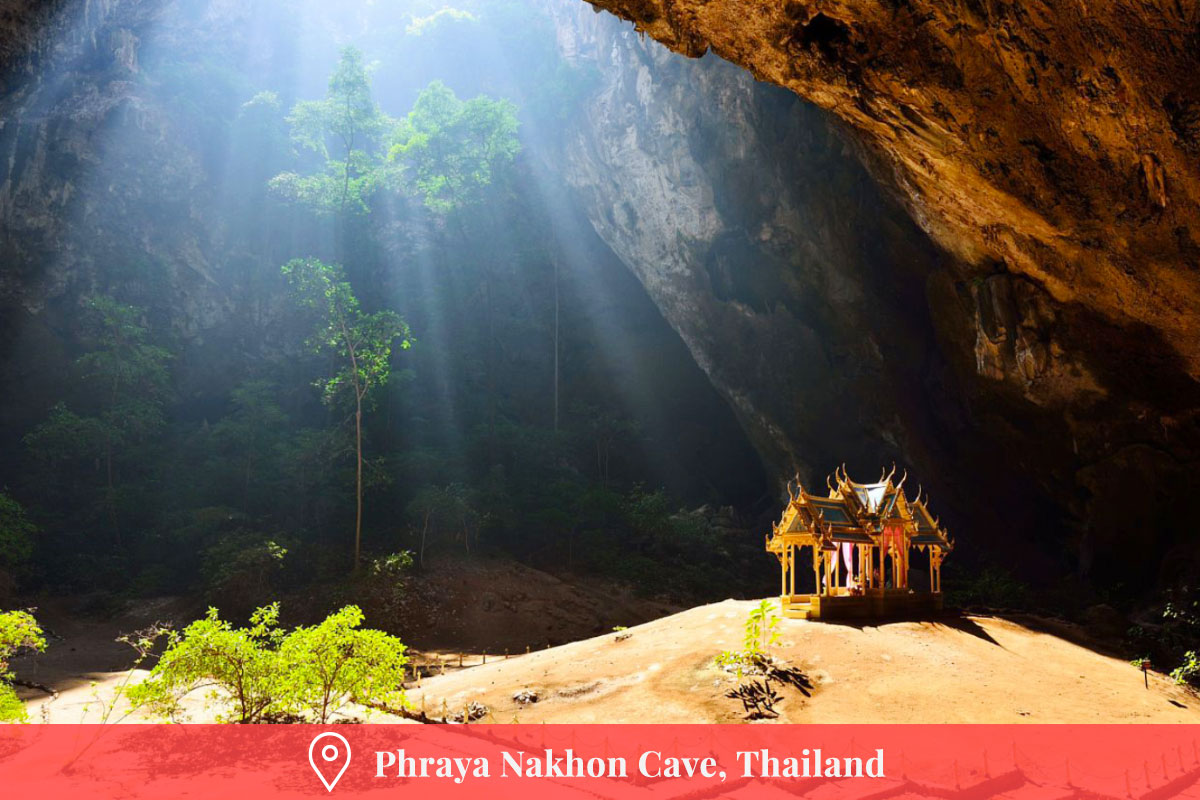
Welcome to Khao Sam Roi Yot marine national park in Kui Buri District of Prachuap Khiri Khan Province, Thailand. Home to cool freshwater marshes between lush limestone hills, two white sand beaches and the spectacular Phraya Nakhon Cave. Sunlight floods through the cavern’s roof of stalagmites and stalactites, bathing a small 125-year old pavilion in a majestic golden glow. Legend says the cave was discovered around 200 years ago by Nakhon Srithammaraja during a storm. The nobleman was forced to abandon ship and thus found refuge here. But it was in 1890 that King Rama V built the pavilion in the precise spot to catch the full glory of morning sunlight. A must-see for any adventurous trekker.
Mount Koya, Japan

A huge temple settlement on a high mountain plain amid 8 peaks, Mount Koya in Wakayama Prefecture, Osaka is a Shingon Buddhist township of many sights. Climb the traditional route up the mountain lined with Ishi stone markers, and you’ll arrive at the mammoth gate entrance, guarded by Kongo warrior statues. On a clear day, you can see as far as the Seto Inland Sea from here. Within Mount Koya, proper is the Danjogaran compound, with prayer halls, pagodas, bell towers and a Shinto shrine. At the middle of the Okunoin sanctuary stands the Kongobuji, the head temple; as well as the Konpon Daito, a 48.5m tall pagoda that represents the central point of a mandala covering all of Japan. There are also serene rock gardens and treasured statues to admire and experience.
Busan, South Korea
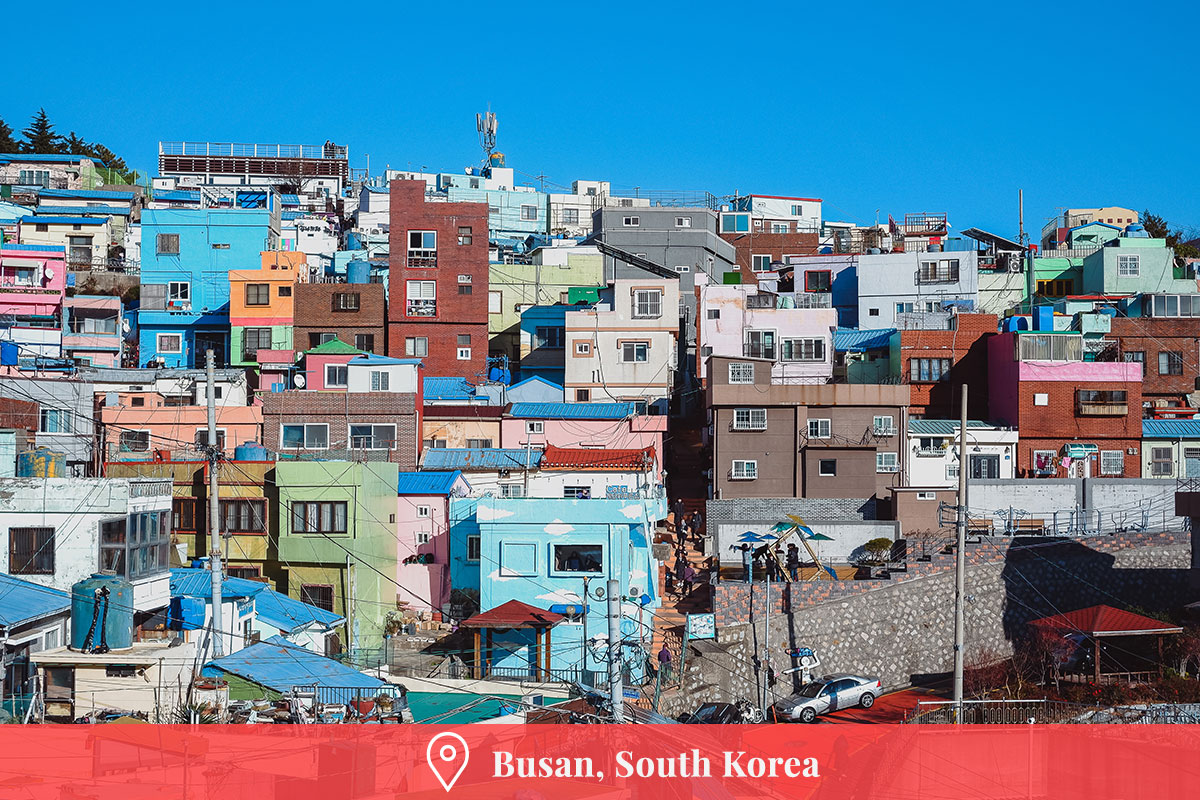
Instead of bustling Seoul, take a tour to the calmer, more authentic Busan. Although the second largest city of South Korea, Busan is quiet, scenic, rich in culture and spirituality. Highlights include the Chungnyeolsa shrine with a stunning lush green park, Seokbulsa temple on the sandstone cliffs of Mt. Geumjeong, the colourful, artistic Gamcheon Cultural village atop the Saha-gu hills, and the mountainside Taejongdae Park overlooking the sea.


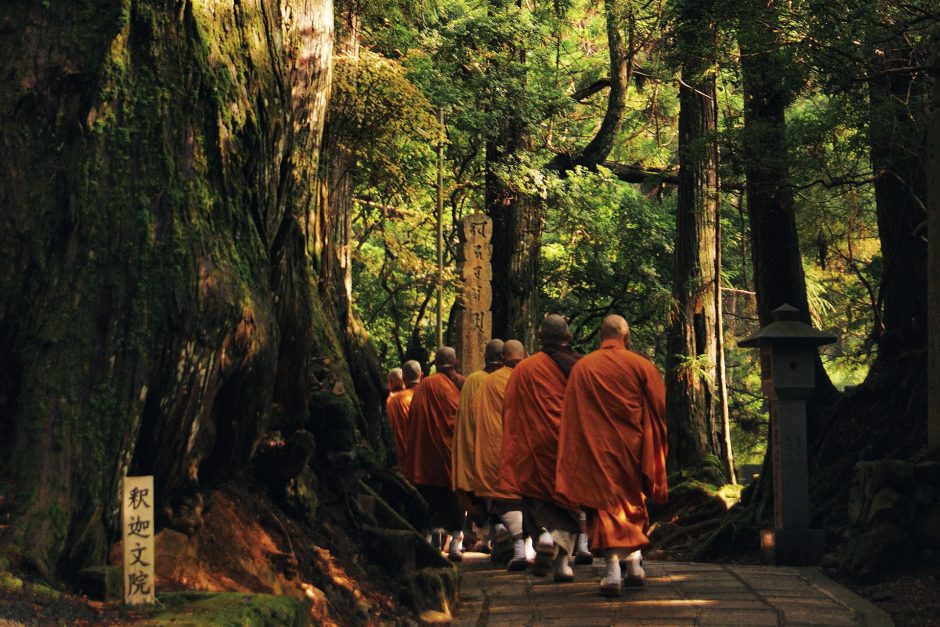
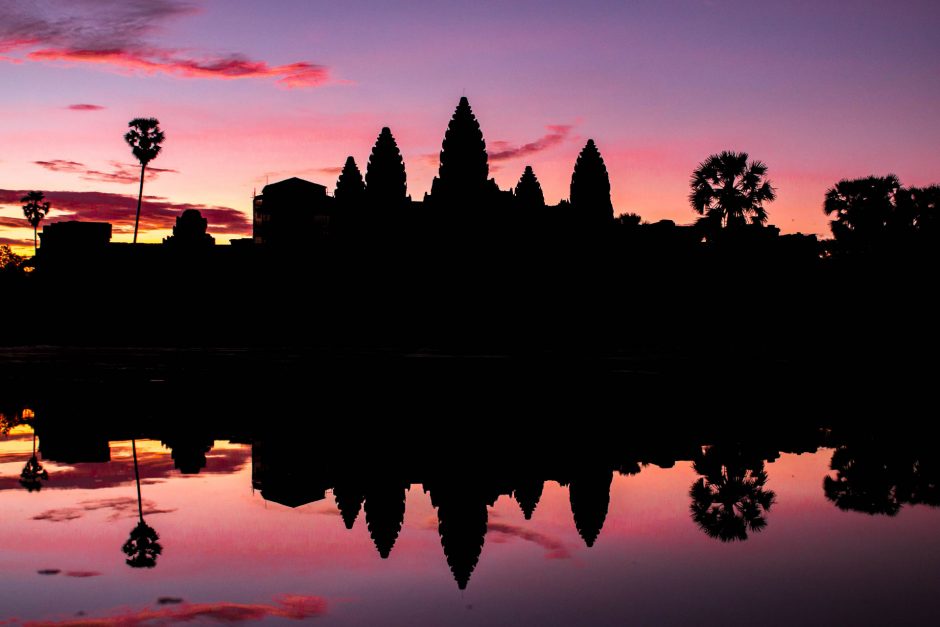



You must be logged in to post a comment.